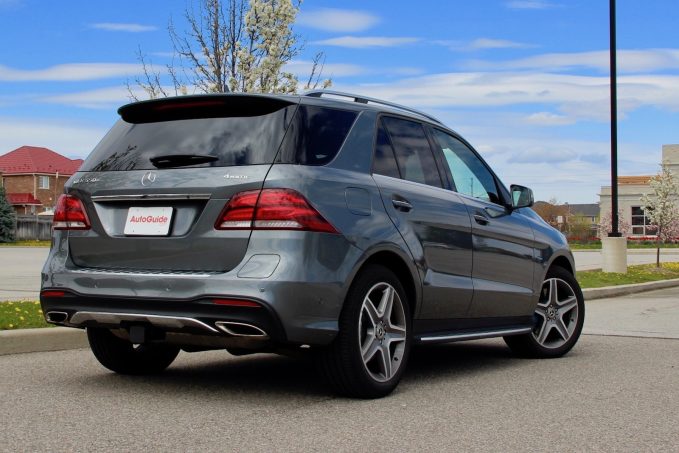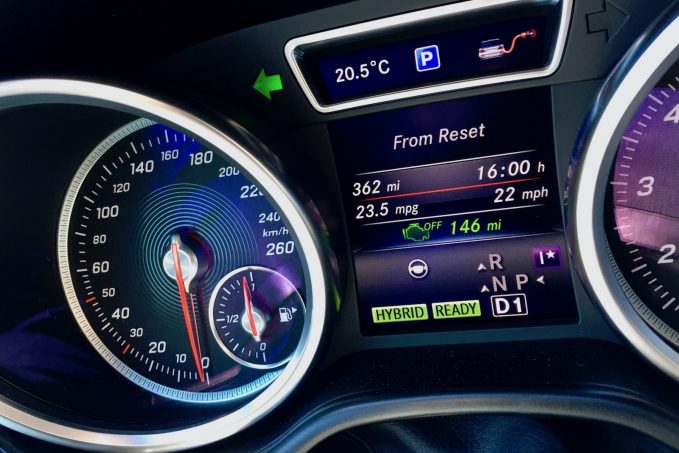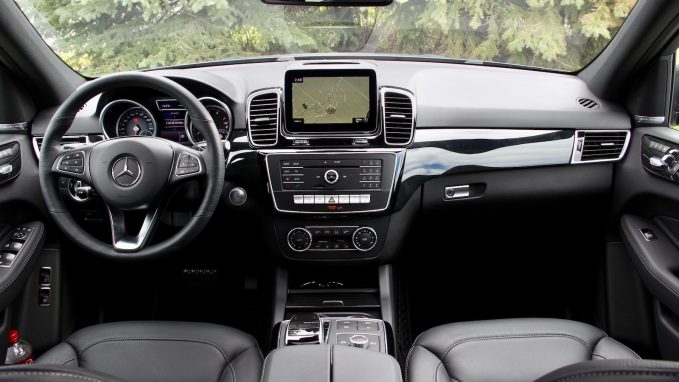Large luxury SUVs and hybrid powertrains are a natural fit.
These vehicles already big and heavy, so the additional battery weight doesn’t represent a large proportion of its mass. Electric motors provide instant torque that helps get all that weight off the line even better than diesel, which was hugely popular in that segment until recently.
They’re also seriously pricey, so they can handle the costs of the research and development that go into new technology.
And luxury crossovers are selling like crazy, so you’d think people would buy them by accident, or even just to avoid waiting for a popular color to come in.
So why is nobody buying the Mercedes-Benz GLE 550e?
According to HybridCars.com’s most recent Sales Dashboard, Fiat sold almost as many 500e full electric vehicles in June (249) as Mercedes-Benz has sold GLE 550e plug-in hybrids all year (268). Remember, the 500e is an EV that the company’s CEO asked people not to buy and was only sold in California and Oregon.
ALSO SEE: Mercedes-Benz GLE-Class Review
It’s not like Mercedes is having any trouble moving GLEs, selling 26,825 so far this year, so it’s almost exactly one percent, while the 500 on which the 500e is based has managed only 7,456, so 1,865 electric versions represents 25 percent of its total sales. OK, the 500e is a completely different segment, so what about other luxury SUVs? The BMW X5 leads the pack with 2,146 plug-in hybrid sales out of 24,159 total X5 sales, the Porsche Cayenne S e-Hybrid manages 978 out of 7,060 total (over 10 percent!) and Volvo has sold 807 “T8” XC90 plug-in hybrid versions out of 12,031.
Granted, the GLE 550e plug-in just arrived this year with little history behind it, but it’s definitely a lot slower out of the gate than its competitors, and perhaps there’s more to it than just supply levels.
All the Modes
The GLE is a fine SUV that doesn’t go overboard trying to be a sports car. Yes, it has the bones to become the mental AMG GLE 63, but you almost wouldn’t know it driving around in Comfort mode on electric power alone.
The electric drive is the big news for the GLE 550e, adding an 85-kW electric motor integrated into the 7G-Tronic automatic transmission to the twin-turbo V6, with an 8.7-kWh lithium-ion battery that theoretically can deliver up to 18 miles (30 km) of pure electric range. On its own, the V6 is rated at 329 hp and 354 lb-ft, but total hybrid system output is listed at 436 hp and 479 lb-ft, peak torque coming on at a low, low 1,600 rpm.
ALSO SEE: 2017 BMW X5 xDrive35i Review
The GLE 550e has the usual Sport and Comfort driving modes, but it also has special hybrid modes for pure electric mode, fully automatic hybrid mode, and a Save mode to use minimal battery and save that charge for later in your trip. Why bother saving it? One argument is that in high-speed highway cruising, the gas engine runs very efficiently while the battery drains quickly, so if you know you have a few miles of dense urban congestion after your highway drive or a stretch of stop-and-go traffic, it’s best to save the juice for those conditions in which the electric is vastly more efficient, or just to do your part for reducing carbon emissions in smoggy downtown cores.
Whether in fully electric, hybrid or Save mode, the powertrain has plenty of jump for any situation and runs smoothly underway, especially in regular hybrid mode when it will use the electric motor as boost for acceleration. It’s got enough power that it’s faster than the AMG GLE 43 despite being almost 500 pounds heavier at 5,456 lb (more than 200 kg heavier at 2,475 kg).
However, the transition from pure electricity to hybrid and the auto start/stop could be smoother for this pricey luxury ride. The other major disappointment was its electric range. I never even got close to its estimated range, and this was under fairly ideal conditions, mild weather, moderate traffic for some regenerative braking, no heavy acceleration and no high speeds, but the best I managed was 12 miles (20 km) one day.
Countering the disappointment of individual electric forays, its overall fuel consumption somewhat made up for it. Official ratings are 43 MPGe in typical driving cycles with regular charging according to the EPA, but once the hybrid battery is depleted, it runs at about 21 mpg.
After a week of driving, with typical highway commuting (about 60 miles/97 km round trip), plus urban and suburban traffic, we clocked 362 miles (583 km), and 146 miles (235 km), so that is over 40 percent of pure electric driving, and that is exclusively with home charging on 120V household outlet. With a faster stage 2 charger setup at home, those evening errands to piano lessons and swimming might have been purely electric. It’s also possible that I could have achieved better overall efficiency if I had stuck with the standard hybrid mode and programmed my office and home as destinations in the nav system – Mercedes’ “intelligent powertrain management”, which will use the
route guidance, traffic info, and information from the adaptive cruise to devise the most efficient operating strategy, from gear selection to regen braking to use of the battery.
Family Living
As an everyday family vehicle getting to those activities, it’s hard to find fault with the GLE, with luxurious and spacious seating, all the modern amenities and styling that many will adore, and few will object to. The front seats are power adjustable in all the right ways, the leather is fine and the seat is heated (though not ventilated). Because it’s a midsize SUV, it’s the perfect height for installing child seats while younger toddlers can still climb up on their own, especially with the help of the running boards, which my wife also appreciated.
To go along with the comfortable seating, the ride was comfort first, but with the optional air suspension, it was possible to firm it up a bit, and sport mode added a bit of weight to the steering and stiffness to that suspension to make it feel less like a swaying land barge.
NEED MORE SPACE IN YOUR MERCEDES? 2017 Mercedes-Benz GLS 450 Review
I’ve gotten used to the Mercedes COMAND interface, and the menus make sense and system is quick to respond, but the ergonomics of the controls left me scratching my head in frustration. The touchpad with handwriting recognition and various controls arches over the scroll wheel, and I love the look of it, but I prefer to use the scroll wheel, and my hand would constantly trigger selections and throw me off the menu I was trying to navigate.
And while the column-mounted stalk shifter works well enough and frees up console space, I still just can’t get over how flimsy it is. And while the GLE name is new, this platform stretches back to the ML that launched in 2011, so some of the interior plastics and design of the center stack aren’t up to the quality standards set by the most recent E-Class.
There’s plenty of headroom and legroom in both rows, although the battery pack eats up quite a chunk of the trunk’s vertical space. It also leaves a huge hump with the rear seats folded for extra cargo space, but part of that hump is a tidy covered compartment for your charging cables, so even if it cuts into total volume, I appreciated the attention to detail for tidy organization.
The Verdict: 2017 Mercedes-Benz GLE 550e Review
The 2017 Mercedes-Benz GLE is a nice SUV, and with a wide range of powertrain options, it is no surprise that it sells so well. Mercedes is spreading its electrification throughout its lineup, so they don’t have to worry about a single individual model recouping the costs of the research and development that go into launching an electric powertrain, but it still must be disappointing to see the GLE 550e selling so slowly.
Perhaps the leap from the GLE 350’s starting price at $52,995 (destination included in all prices) to $67,000 is just a non-start for people to consider, and at over $80,000 as tested, it just seems like far too much money to pay for a small improvement in fuel consumption and doing one’s part for the environment. In Canada, the GLE 550e starts at $85,000, almost $20K more than the $65,800 starting price for the GLE line and the example we drove was just a tick over $100,000. The BMW X5 plug-in hybrid is much closer to the base price of the X5, gives up some power and speed for greater efficiency and electric range (2.0L turbo paired with 83-kW electric motor and 9.2-kWh battery), a formula that appears to be much more inviting for those willing to pay more to rein in fuel consumption.
The GLE 550e is a Mercedes that does it all, but there are others in the lineup that do more for less.












